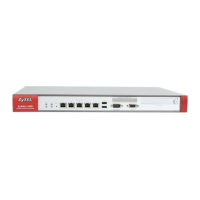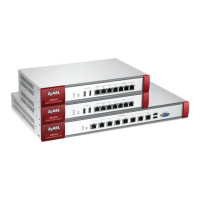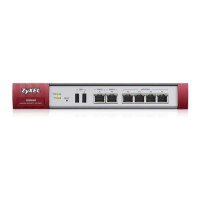Chapter 42 Object
ZyWALL/USG Series User’s Guide
740
42.3 AP Profile Overview
This section shows you how to configure preset profiles for the Access Points (APs) connected to
your ZyWALL/USG’s wireless network.
•The Radio screen (Section 42.3.1 on page 741) creates radio configurations that can be used by
the APs.
•The SSID screen (Section 42.3.2 on page 746) configures three different types of profiles for
your networked APs.
42.3.0.1 What You Need To Know
The following terms and concepts may help as you read this section.
Wireless Profiles
At the heart of all wireless AP configurations on the ZyWALL/USG are profiles. A profile represents a
group of saved settings that you can use across any number of connected APs. You can set up the
following wireless profile types:
• Radio - This profile type defines the properties of an AP’s radio transmitter. You can have a
maximum of 32 radio profiles on the ZyWALL/USG.
• SSID - This profile type defines the properties of a single wireless network signal broadcast by
an AP. Each radio on a single AP can broadcast up to 8 SSIDs. You can have a maximum of 32
SSID profiles on the ZyWALL/USG.
• Security - This profile type defines the security settings used by a single SSID. It controls the
encryption method required for a wireless client to associate itself with the SSID. You can have a
maximum of 32 security profiles on the ZyWALL/USG.
• MAC Filtering - This profile provides an additional layer of security for an SSID, allowing you to
block access or allow access to that SSID based on wireless client MAC addresses. If a client’s
MAC address is on the list, then it is either allowed or denied, depending on how you set up the
MAC Filter profile. You can have a maximum of 32 MAC filtering profiles on the ZyWALL/USG.
SSID
The SSID (Service Set IDentifier) is the name that identifies the Service Set with which a wireless
station is associated. Wireless stations associating to the access point (AP) must have the same
SSID. In other words, it is the name of the wireless network that clients use to connect to it.
WEP
WEP (Wired Equivalent Privacy) encryption scrambles all data packets transmitted between the AP
and the wireless stations associated with it in order to keep network communications private. Both
the wireless stations and the access points must use the same WEP key for data encryption and
decryption.

